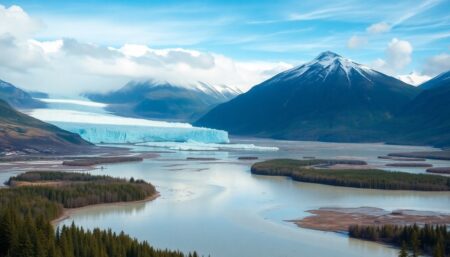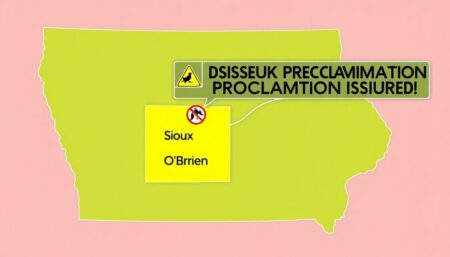Welcome to this insightful exploration of the Philippines’ pivotal role in the global push for climate justice. As climate change intensifies, nations like the Philippines are at the forefront of advocating for equitable solutions. Join us as we delve into the personal stories, international agreements, and domestic measures that highlight the archipelago’s resilience and leadership in this critical battle.
From personal traumas to global action, the Philippines stands at the frontline of climate advocacy
Imagine a vista that begins with the crystal-clear turquoise waters of Palawan, where the calm laps against the powdery white sands, inviting you to immerse yourself in nature’s tranquility. Here, towering limestone cliffs stand as ancient guardians, their verdant tops draped in a rich tapestry of flora, a testament to the Philippines’ breathtaking serenity.
Yet, the canvas of this tropical paradise is not always painted with gentle strokes. Picture now the same landscape, under a sky bruised with dark clouds, as a typhoon whips the sea into a frenzy. The wind howls, bending the palms and stirring the jungle, as the rain pelts the earth, reshaping the terrain with each downpour. This is the harsh reality of the Philippines’ weather, where storms can strike with an intensity found nowhere else on Earth.
But like the mighty bamboo that bows in the gale yet stands firm, the Philippines endures. This blend of serene beauty and extreme weather has forged a nation of resilience. In the face of climate change, the country stands as a symbol of adaptability and strength, continuing to captivate with its stunning landscapes and inspiring tenacity.

Living on the Front Lines
In the heart of the Philippines, typhoons are not just weather events; they are profound experiences that leave indelible marks on the lives of those in their path. Take Lorena Ivy Bello Ogania, a resident of Tacloban, who endured the wrath of Typhoon Haiyan in 2013. Lorena recalled the deafening winds and the relentless rain, as she and her family huddled together, praying for their lives. “It was like the end of the world,” she described, her voice trembling with emotion. The aftermath was a stark contrast to the vibrant city she once knew—debris scattered like confetti, homes reduced to matchsticks, and an eerie silence punctuated only by the cries of survivors.
The practical challenges that followed were overwhelming. Lorena and her family were left without a home, electricity, or clean water. They had to rely on relief goods for food and other basic necessities. Despite the outpouring of international aid, distribution was often chaotic and slow. “We had to line up for hours under the scorching sun just to get a few bottles of water and canned goods,” Lorena remembered. Schools and workplaces were destroyed, leaving many with no sense of routine or normalcy. The city became a giant wreckage site, and every day was a struggle to find food, secure shelter, and stay safe amidst the ruins.
Similarly, Tony Abletes, a farmer from Eastern Samar, has his own harrowing tales of typhoons. He recounted how Typhoon Haiyan swept away his entire crop, leaving him with nothing to harvest and no income to support his family. “I felt helpless,” Tony shared, his eyes welling up with tears. “Years of hard work were gone in an instant.” The emotional toll was immense; the loss of livelihood brought feelings of despair and uncertainty about the future. Tony’s story is not unique; many farmers like him face the brunt of these disasters, pushing them deeper into poverty.
The emotional challenges are as devastating as the physical destruction. Both Lorena and Tony grapple with the trauma of their experiences. The constant fear during the typhoon season, the anxiety of rebuilding, and the grief of loss are emotions that linger long after the storms have passed. “Every time it rains hard, I get scared,” Lorena admitted. “The sound of the wind brings back terrible memories.” Despite these struggles, their resilience shines through. They continue to rebuild, to hope, and to find strength in their communities. Their stories serve as a poignant reminder of the human spirit’s enduring capacity to rise above adversity.
- Lack of basic necessities like food, water, and shelter
- Loss of livelihood and income
- Trauma and emotional distress
- Chaotic and slow distribution of relief goods

Compensating Climate Losses
The establishment of the Loss and Damage (L&D) Fund at COP27 marked a significant milestone in global climate policy. This fund aims to address the inequities of global warming by recognizing that vulnerable countries, particularly those in the Global South, are disproportionately affected by climate change despite contributing the least to greenhouse gas emissions. The L&D Fund seeks to provide financial support to these nations to cope with the loss and damage caused by climate-related events. The agreement reached at COP27 in Sharm El-Sheikh, Egypt, was hailed as a breakthrough, as it finally acknowledged the need for wealthy nations to contribute financially to mitigate the impacts of climate change on the most vulnerable.
The COP28 conference, scheduled to take place in Dubai, United Arab Emirates, will be crucial for operationalizing the L&D Fund. Key discussions will focus on:
- The specific mechanisms for wealthy nations to contribute to the fund.
- The criteria for allocating resources to vulnerable countries.
- The governance structure of the fund to ensure transparency and accountability.
COP28 aims to build on the momentum from COP27 and turn the commitments into actionable plans, ensuring that the L&D Fund becomes a functional and effective tool in the fight against climate change.
The Philippines plays a pivotal role in this historic agreement by hosting the L&D Fund Board. This responsibility underscores the Philippines’ commitment to climate justice and its leadership in advocating for the rights of vulnerable nations. As one of the countries most affected by extreme weather events and rising sea levels, the Philippines brings a unique perspective to the table. By hosting the board, the Philippines will help steer the fund’s direction, ensuring that it meets the urgent needs of countries on the frontlines of climate change. This role not only highlights the Philippines’ proactive stance on climate action but also sets a precedent for other nations to follow in addressing the global inequities exacerbated by climate change.

Bridging the Funding Gap
The Learning and Development (L&D) Fund presents a unique set of challenges and opportunities in the realm of climate finance. Established to support education and training initiatives, the fund aims to empower communities to adapt to climate change and build resilience. However, the fund’s effectiveness is contingent on addressing several key challenges. These include ensuring that funds reach the most vulnerable communities, minimizing bureaucratic hurdles, and promoting transparency and accountability in fund disbursement and utilization.
One of the most pressing issues is the need to prioritize climate-affected communities. These communities, often marginalized and disadvantaged, are at the forefront of climate impacts. According to John Leo Algo, a prominent climate policy expert, “The L&D Fund must prioritize those who are most vulnerable to climate change, ensuring that they have the resources and skills to adapt and thrive in a changing climate.” Prioritizing these communities is not just a moral imperative, but also a strategic one. By empowering those most affected, the fund can create ripple effects that benefit entire regions and nations.
Rapid deployment of funds is another critical aspect that needs immediate attention. As climate change accelerates, so does the need for swift action. Mark Dennis Joven, a renowned climate finance specialist, argues that “The L&D Fund must be agile and responsive, capable of quickly disbursing funds to support urgent initiatives.” This requires streamlining approval processes, reducing red tape, and fostering a culture of urgency within the fund’s management. Rapid deployment ensures that communities are not left waiting for crucial resources as they grapple with immediate climate threats.
To maximize the impact of the L&D Fund, experts suggest several key strategies:
-
Targeted Outreach:
Proactive identification and engagement of vulnerable communities to ensure they are aware of and can access the fund.
-
Capacity Building:
Investing in the capacity of local organizations and institutions to effectively manage and implement L&D Fund projects.
-
Monitoring and Evaluation:
Robust systems to track the impact of funded initiatives, ensuring accountability and learning from successes and failures.
-
Innovative Financing:
Exploring blended finance models and public-private partnerships to leverage additional resources and amplify the fund’s impact.
By embracing these strategies, the L&D Fund can overcome its challenges and seize the opportunities to make a tangible difference in the lives of those most affected by climate change.

Domestic Measures for Climate Justice
In the Philippines, domestic efforts to combat climate change have culminated in the introduction of the Climate Accountability (CLIMA) Bill. This groundbreaking legislation aims to hold carbon polluters accountable for their contributions to climate change. The CLIMA Bill seeks to establish a framework for identifying and assigning responsibility to major emitters, known as ‘Carbon Majors.’ By doing so, the bill aims to ensure that these companies bear the costs of climate-related disasters and mitigation efforts. This is a significant step towards environmental justice, as it recognizes the disproportionate impact of climate change on vulnerable communities.
The CLIMA Bill outlines several key provisions to achieve its goals. These include:
- Establishing a Commission on Climate Change Accountability to investigate and document the role of Carbon Majors in climate change.
- Creating a Climate Change Damages Fund to finance mitigation and adaptation efforts, as well as to compensate communities affected by climate-related disasters.
- Providing mechanisms for citizen suits against Carbon Majors, allowing individuals and communities to hold these companies accountable in court.
Comparatively, the United States has also seen legislative efforts to address climate change and hold polluters accountable. One notable example is the Climate Change Accountability Act introduced by Senator Sheldon Whitehouse. This bill aims to shift the burden of climate change costs from taxpayers to the fossil fuel industry. Similar to the CLIMA Bill, it seeks to establish a framework for identifying and assigning responsibility to major emitters.
However, there are key differences between the Philippine and U.S. approaches. The CLIMA Bill places a stronger emphasis on community involvement and environmental justice, reflecting the unique challenges and vulnerabilities faced by the Philippines. In contrast, the U.S. bill focuses more on economic responsibility and industry accountability. Despite these differences, both efforts signal a growing global trend towards holding carbon polluters accountable for their contributions to climate change.









